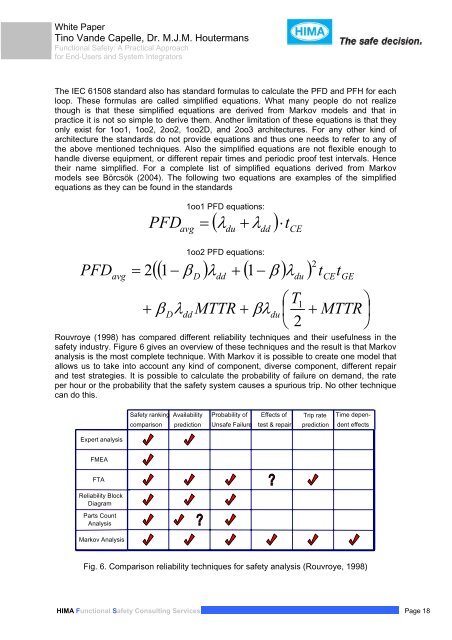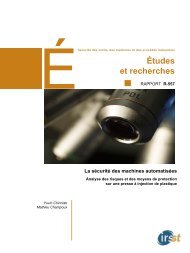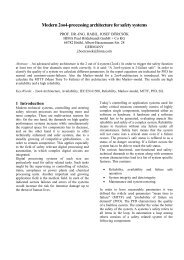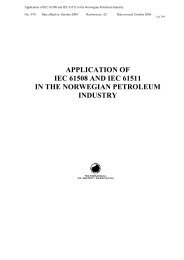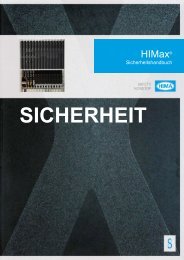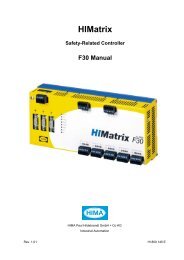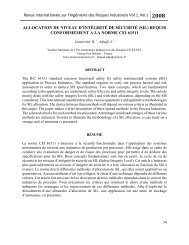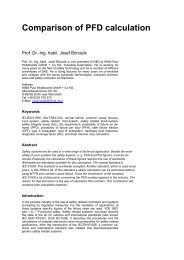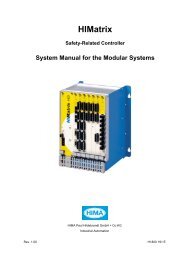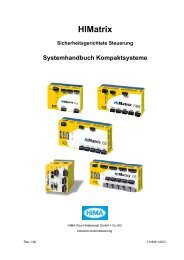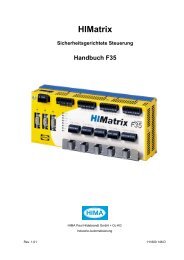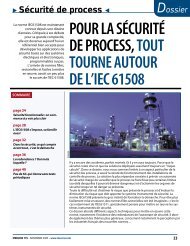Functional Safety
Functional Safety
Functional Safety
You also want an ePaper? Increase the reach of your titles
YUMPU automatically turns print PDFs into web optimized ePapers that Google loves.
White Paper<br />
Tino Vande Capelle, Dr. M.J.M. Houtermans<br />
<strong>Functional</strong> <strong>Safety</strong>: A Practical Approach<br />
for End-Users and System Integrators<br />
The IEC 61508 standard also has standard formulas to calculate the PFD and PFH for each<br />
loop. These formulas are called simplified equations. What many people do not realize<br />
though is that these simplified equations are derived from Markov models and that in<br />
practice it is not so simple to derive them. Another limitation of these equations is that they<br />
only exist for 1oo1, 1oo2, 2oo2, 1oo2D, and 2oo3 architectures. For any other kind of<br />
architecture the standards do not provide equations and thus one needs to refer to any of<br />
the above mentioned techniques. Also the simplified equations are not flexible enough to<br />
handle diverse equipment, or different repair times and periodic proof test intervals. Hence<br />
their name simplified. For a complete list of simplified equations derived from Markov<br />
models see Börcsök (2004). The following two equations are examples of the simplified<br />
equations as they can be found in the standards<br />
PFD<br />
avg<br />
=<br />
1oo1 PFD equations:<br />
avg<br />
( λdu<br />
+ dd ) tCE<br />
PFD = λ ⋅<br />
2<br />
1oo2 PFD equations:<br />
( ( 1−<br />
β ) λ + ( 1−<br />
β ) λ )<br />
+ β<br />
D<br />
λ<br />
dd<br />
D<br />
dd<br />
⎛ T1<br />
⎞<br />
MTTR + βλdu<br />
⎜ + MTTR⎟<br />
⎝ 2 ⎠<br />
Rouvroye (1998) has compared different reliability techniques and their usefulness in the<br />
safety industry. Figure 6 gives an overview of these techniques and the result is that Markov<br />
analysis is the most complete technique. With Markov it is possible to create one model that<br />
allows us to take into account any kind of component, diverse component, different repair<br />
and test strategies. It is possible to calculate the probability of failure on demand, the rate<br />
per hour or the probability that the safety system causes a spurious trip. No other technique<br />
can do this.<br />
Expert analysis<br />
FMEA<br />
FTA<br />
Reliability Block<br />
Diagram<br />
Parts Count<br />
Analysis<br />
Markov Analysis<br />
<strong>Safety</strong> ranking Availability Probability of Effects of Trip rate<br />
comparison prediction Unsafe Failure test & repair prediction<br />
HIMA <strong>Functional</strong> <strong>Safety</strong> Consulting Services Page 18<br />
du<br />
2<br />
t<br />
CE<br />
t<br />
GE<br />
Time dependent<br />
effects<br />
Fig. 6. Comparison reliability techniques for safety analysis (Rouvroye, 1998)


